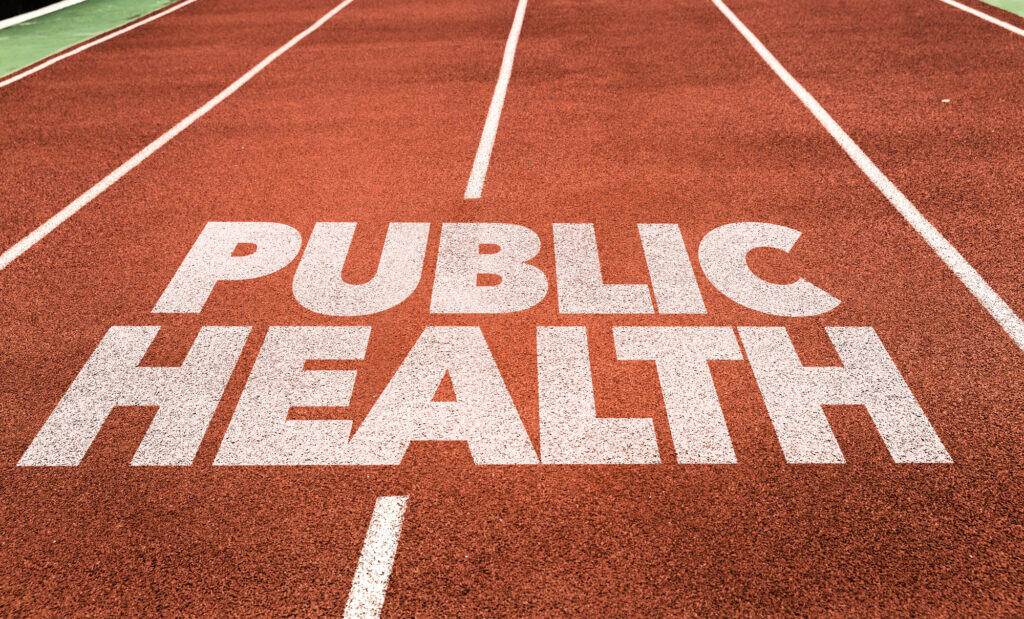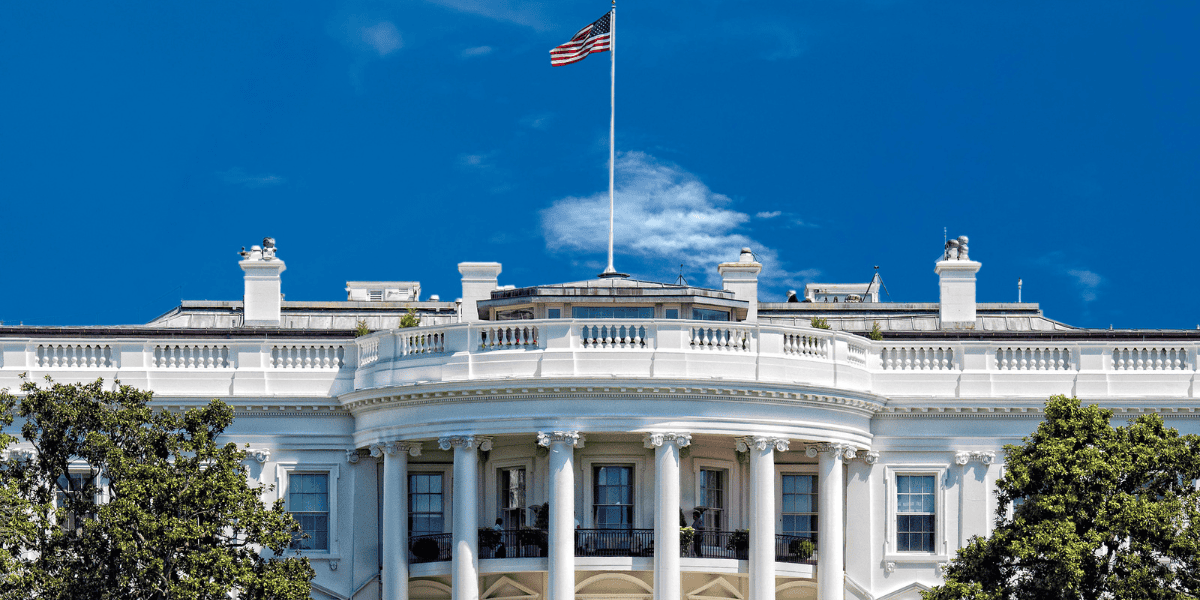By Jennifer Wolff-Gillispie HWP, LC
EDITOR’S SUMMARY: The Make America Healthy Again (MAHA) strategy arrives at a moment of urgency, as families like yours face rising childhood illness and growing mistrust of the systems meant to protect you. With measures that reach from school cafeterias to chemical oversight and medical research, the plan signals a shift toward prevention and accountability. Its resonance comes not only from federal action but from years of citizen advocacy pressing for transparency, safety, and a healthier future for children.
There are days in American history that leave an imprint so deep they echo for generations. To those who witnessed the march across Selma’s bridge, who stood in the crowd at Gettysburg, or who pressed the quill to parchment as the Declaration of Independence was being signed, the memory of those moments is more than historical record—it is a visceral reminder of what it feels like when a nation takes a leap toward a better future. On September 9, 2025, as the Make America Healthy Again (MAHA) strategy was unveiled, that same sense of hope filled the air. It signals that America, weary from decades of declining health and fractured trust, is choosing to chart a new path forward—one that promises better health for children, stronger families, and the foundation for lasting generational resilience.
Announced by President Trump and Health and Human Services Secretary Robert F. Kennedy Jr., Executive Order 14212, “Establishing the President’s Make America Healthy Again Commission,” is framed as a roadmap rather than a standard policy release. It is a declaration that the health of Americans will no longer be treated as negotiable or secondary. It is a commitment to prevention, transparency, and accountability. For decades, families have watched childhood illness climb at alarming rates. Obesity, asthma, autoimmune disorders, learning challenges, and behavioral conditions have become all too common. Parents who once trusted that government, schools, and healthcare systems were safeguarding their children have increasingly found themselves questioning whether the basics—food, medicine, water, and even the environment—were truly designed with children’s best interests at heart.
MAHA is the long-awaited response to those concerns, a sweeping plan that acknowledges the crisis and commits to addressing it head-on. To understand the scope of this moment, it is important to recognize the legacy of the U.S. Department of Health and Human Services (HHS). Since its founding in 1953 (first as Health, Education, and Welfare, then eventually as Health and Human Services in 1980), HHS has guided the nation through some of its most significant health milestones. These include the creation of the Food and Drug Administration (FDA) and the Centers for Disease Control and Prevention (CDC), the passage of the Social Security Act, the development of Medicare and Medicaid programs, and the signing of the Affordable Care Act.
The department also advanced civil rights protections in education, defended patient privacy through Health Insurance Portability and Accountability Act (HIPAA), responded with a national campaign for HIV/AIDS awareness and treatment, and managed the largest pandemic response in a century. While many of these initiatives were born from good intentions, their execution has not always lived up to their promise—leaving gaps in access, outcomes, and confidence. The adoption of MAHA offers an opportunity to realign this framework, correcting the trajectory so that it truly supports and guides Americans toward better health. The Commission announcement is presented not as a departure from tradition but as its boldest recommitment, extending the arc of U.S. health leadership into uncharted territory.

From Policy to Prevention
MAHA reflects a recognition that the old, reactive model of waiting until disease strikes is no longer sustainable. The new strategy shifts the focus upstream, seeking to prevent illness before it begins. It aims to transform America’s diet, protect children from chemicals and toxins, strengthen oversight of medical products, and educate families about healthier ways of living. From the quality of school and hospital meals to the transparency of pharmaceutical research, the plan promises to lift standards and restore trust.
Central to MAHA is a commitment to research. For too long, sensitive but vital questions have been shelved rather than studied. This roadmap changes that, funding investigations into the long-term effects of pesticides, food additives, and environmental toxins, as well as the role of screen addiction, electromagnetic radiation, and the health implications of fluoride in drinking water. It also calls for deeper exploration of the safety of public health measures and recommendations, arguing that only by confronting concerns openly can public confidence be rebuilt. One key demand is the insistence that all pharmaceutical products, vaccines included, be investigated by the gold standard of scientific research—double-blind, placebo-controlled studies using inert substances with no active therapeutic effect.
Yet MAHA is not only about laboratories and agencies—it is about cultural renewal. Schools will once again serve as hubs of nourishment and movement rather than pipelines for processed food and sedentary habits. Whole milk and full-fat dairy will be restored to cafeterias, reversing a 2012 mandate (7 CFR 210.10(d)(1)(i) and 7 CFR 220.8(d)) that required schools to serve only fat-free or low-fat milk in efforts to cut calories and fat—two targets long blamed for heart disease and obesity. New research challenges those findings, with some studies suggesting animal fats may actually lower the risk of these conditions. National fitness initiatives such as the Presidential Fitness Test will be relaunched in schools, aiming to inspire a new generation away from sedentary lifestyles and toward strength, endurance, and healthier living.
In an effort to give American families greater transparency when they are purchasing food, a proposed “Front-of-Pack Nutrition Information” designation is still being finalized and is intended to place easy-to-read nutrition details on the front of packages—showing whether a product’s saturated fat, sodium, and added sugar levels are “Low,” “Medium,” or “High.” This would give clear, at-a-glance guidance for consumers, equipping them to make more informed choices. For the first time “ultra-processed foods” will be defined in federal guidelines—something never done before. Adjustments to Supplemental Nutrition Assistance Program (SNAP) will limit purchases of “junk food,” freeing resources for real nutrition among the most vulnerable, while stronger Special Supplemental Nutrition Program for Women, Infants and Children (WIC) standards will reinforce healthy foundations early in life. Secretary Kennedy emphasized this in August 2025:
“For years, SNAP has used taxpayer dollars to fund soda and candy—products that fuel America’s diabetes and chronic disease epidemics. These waivers help put real food back at the center of the program and empower states to lead the charge in protecting public health.”
MAHA also addresses the overlooked realm of food additives and chemical safety. It calls for closing the FDA’s Generally Recognized as Safe (GRAS) loophole, requiring that all food additives go through independent safety reviews rather than being cleared by the companies that profit from them. Petroleum-based dyes, still common in foods and medications, would be phased out in favor of safer alternatives derived from flowers or algae. More research is slated to be made on the cumulative effects of environmental chemical toxins, including those in food, and how they may reflect real-world risks. It also re-examines long-standing federal policies such as water fluoridation and contamination from per- and polyfluoroalkyl substances (PFAS), applying the latest science to determine whether adjustments are needed to protect public health.
Strengthening access to healthy food also depends on supporting local food systems and small-scale producers. Independent dairies would be able to process and sell their products directly, while zoning hurdles that have blocked mobile grocery units from serving food deserts would be cleared. Permitting for new grocery stores in underserved neighborhoods would be streamlined, making it easier for families to access fresh, nutritious foods close to home. These measures complement broader nutrition initiatives, ensuring that healthy options are available both in stores and directly from local farmers.
Support for small farms would extend beyond basic access. Organic certification processes would be streamlined, and costs for those transitioning to organic practices would be reduced. Bureaucratic barriers for Community Supported Agriculture (CSA) programs and direct-to-consumer sales would be eliminated, fostering stronger connections between farmers and the communities they serve. By making these systems more accessible, families can benefit from fresher, less processed foods while independent farms and communities thrive economically.
Regulatory and operational burdens would be further reduced through a comprehensive support framework. U.S. Department of Agriculture (USDA) applications would be digitized and simplified, reliable access to credit expanded, and land acquisition and permitting processes improved. Programs would promote the next generation of farmers and provide greater access to markets, infrastructure, and educational resources. Risk management and business-planning tools would also be enhanced, ensuring that farms remain resilient and capable of sustaining local livelihoods. Together, these steps create a food system that not only improves access and choice but also strengthens rural economies and public health nationwide.
Research, Regulation, and Responsibility
At the forefront of this MAHA plan is a bold commitment to understanding and preventing vaccine injuries. HHS, in collaboration with the National Institutes of Health (NIH), will establish a new vaccine injury research program at the NIH Clinical Center, with the potential to expand to additional centers nationwide. This program will employ improved data collection and advanced analysis to better protect public health, identify risks, and ensure vaccines remain safe and effective for every American. Simultaneously, HHS, through NIH and in collaboration with the Centers for Medicare & Medicaid Services (CMS), will intensify research into the underlying causes of autism, including studies through the Real World Data Platform, which is to combine “multiple datasets, such as claims information, electronic health records, and wearables data, into a single integrated dataset.” By prioritizing these efforts, the program seeks to reduce lifelong health challenges, support affected families, and inform future prevention and treatment strategies.
The plan will explore how nutrition, sleep, fitness, oral health, and the gut microbiome affect lifelong health, including links between pediatric oral health and chronic diseases such as type 2 diabetes, cardiovascular disease, and autoimmune conditions. NIH will also review rural and tribal health research to ensure children in all populations benefit from scientifically rigorous studies. Additionally, the program will explore repurposed drugs to treat chronic diseases more effectively and cost-efficiently.
Mental health and addiction research will be strengthened, with a focus on children and adolescents, including the effects of screen time and early interventions. Artificial intelligence (AI) will be used strategically to help doctors spot problems earlier, personalize care, monitor health in real time, and predict risks before serious issues develop. Pediatric and young adult cancers will be a first area of focus, using AI to uncover causes, identify risks, and guide prevention and treatment. By combining data, research, and technology, this strategy aims to prevent chronic disease, improve mental and physical health, and give families the tools they need to support lifelong well-being.
While the MAHA strategy covers many important and valuable areas, some critics as well as supporters feel there are holes in their agenda with important concerns still not addressed. One of these is the continued use of pesticides on crops and in the food system. Organizations like the Center for Biological Diversity argue that, despite widespread evidence of harm and public health risks, the chemical industry and its allies successfully blocked stronger pesticide restrictions in the U.S. The Environmental Protection Agency (EPA) has instead relied on public confidence campaigns and research into application technologies, while millions of Americans remain exposed to toxic chemicals such as glyphosate and neonics—substances banned in much of the world. Although Secretary Kennedy has repeatedly stated that there are “many diseases linked to glyphosate exposure,” he appeared to overlook these concerns during the Senate hearings in May 2025. There he states:
“The MAHA movement collapses if we can’t partner with the American farmer in producing safe, robust and abundant food supply and we understand that. I said during my campaign… we can not take any step that will put a single farmer in this country out of business. There’s a million farmers that rely on glyphosate, 100% of corn grown in this country relies on glyphosate and we are not going to do anything to jeopardize that business model.”
This response most likely reflects pressure from lawmakers and established industry interests to avoid major changes unless Secretary Kennedy is 100% certain there are “substantial facts and evidence that our government got things terribly wrong” on pesticide safety. Before these chemicals are removed from agriculture, MAHA must develop a strategy for producing food without them—ensuring that crop yields remain steady and farmers are not financially harmed by the transition. While these ideas are likely being discussed and evidence is gathered to definitively show the dangers of pesticides and other agricultural chemicals, environmental activist and Moms Across America founder, Zen Honeycutt wants Americans to know grassroots organizations like hers will not back down on this, emphasizing:
“We need to continue the effort to expose the truth about the pesticides and toxins in our food supply and reduce our children’s exposure even if the MAHA commission report does not say that they are going to do that right now, we will be doing that in our way.”

Citizen Action Meets Federal Power
What makes this moment particularly powerful is that it is not driven by government action alone. For nearly a decade before this announcement, A Voice for Choice Advocacy (AVFCA) has been laying the groundwork for change, alongside other grassroots movements. Founded by Christina Hildebrand in 2015, AVFCA tirelessly advocates for transparency and informed consent, highlighting the risks of ultra-processed foods, questioning the safety of unexamined additives, and championing medical and health freedom. The organization, alongside other advocates, has carried the banner of information, empowerment, and health rights, showing that citizen action can spark national transformation.
The alignment of AVFCA’s vision with the federal government’s sweeping strategy underscores a profound truth: real change requires both passionate individuals and bold institutions. The convergence of citizen-led advocacy and government action sends a clear message that the nation is ready to move beyond rhetoric and toward meaningful progress. Families who once felt ignored now have a voice amplified at the highest levels of decision-making. Yet for AVFCA and many others, the work is just beginning. The organization’s role will be to educate the public on the issues being addressed at the national level, serve as a vigilant watchdog to ensure the MAHA agenda stays on track and accountable, and continue to represent the interests and voices of the people as these policies unfold.
There are those who question whether the plan goes far enough, arguing that without strict bans or aggressive regulation it may not deliver the change it promises. Yet the strength of MAHA lies in its balance of boldness and pragmatism. By bringing together industry, schools, farmers, and communities, it frames health reform as a shared mission—one in which every citizen has a stake and a role to play, rather than a battle to be fought. Children will grow up with fewer chemical additives in their meals and everyone will benefit from more transparency in healthcare. Parents will finally access information once buried behind bureaucracy, and citizens will see that prevention is not only more effective than cure—it is an act of responsibility, preserving health before illness can take hold.
This is more than a program launch; it is the dawn of a new era. By uniting community-driven organizations with the reach of federal leadership, the nation steps into a future where informed choice, accountability, and children’s well-being are non-negotiable. America is not merely healthier—it is stronger, freer, and more united. Today, with MAHA, the country declares that health will no longer be an afterthought. It is a right, a responsibility, and a promise—to be defended, demanded, and carried forward by generations to come.
~
Published on September 11, 2025.
If you’ve found value in this article, please share it!
To support the research and health education of AVFC editorial, please consider making a donation today. Thank you.


